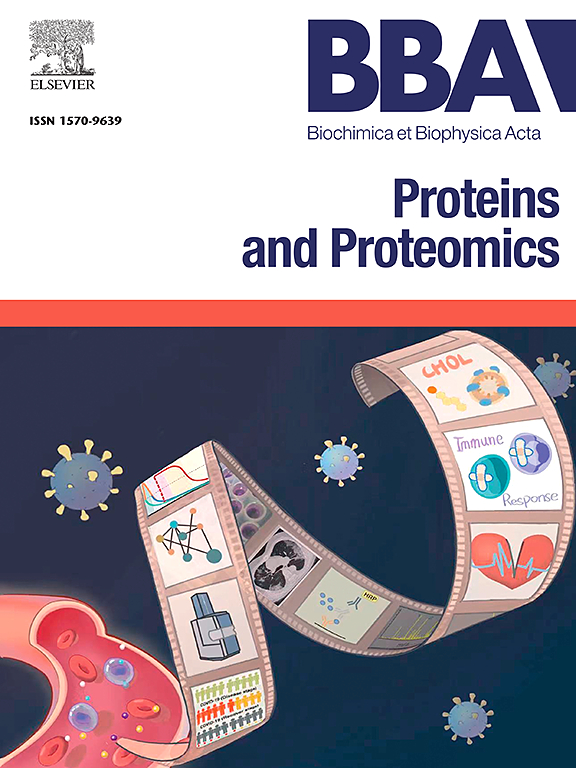TMB Stab-pred: Predicting the stability of transmembrane β-barrel proteins using their sequence and structural signatures
IF 2.3
4区 生物学
Q3 BIOCHEMISTRY & MOLECULAR BIOLOGY
Biochimica et biophysica acta. Proteins and proteomics
Pub Date : 2025-04-04
DOI:10.1016/j.bbapap.2025.141070
引用次数: 0
Abstract
Understanding the folding and stability of transmembrane β-barrel proteins (TMBs) provides insights into their structural integrity, functional mechanisms, and implications for disease states. In this work, we have characterized the important features that influence the folding and stability of TMBs. Our results showed that lipid accessible surface area and transition energy are important for understanding the stability of TMBs. Further, this information was utilized to develop a linear regression-based method for predicting the stability of TMBs. Our method achieved a correlation and mean absolute error (MAE) of 0.96 and 0.94 kcal/mol on the jack-knife test. Moreover, we compared the stability of TMBs with globular all-β proteins and observed that long-range interactions and energetic properties are crucial for maintaining the stability of both β-barrel membrane and all-β globular proteins. On the other hand, side-chain – side-chain hydrogen bonds and lipid accessible surface area are specific to membrane proteins. These features are critical for membrane proteins because they influence a protein to embed within the membrane environment. Further, we have developed a web server, TMB Stab-pred for predicting the stability of TMBs, and it is accessible at https://web.iitm.ac.in/bioinfo2/TMBB/index.html.
TMB Stab-pred:利用β-桶跨膜蛋白的序列和结构特征预测其稳定性。
了解跨膜β桶蛋白(TMBs)的折叠和稳定性,有助于深入了解其结构完整性、功能机制和疾病状态。在这项工作中,我们描述了影响TMBs折叠和稳定性的重要特征。我们的研究结果表明,脂质可达表面积和过渡能对了解TMBs的稳定性很重要。此外,利用这些信息开发了一种基于线性回归的方法来预测TMBs的稳定性。该方法的相关系数和平均绝对误差(MAE)分别为0.96和0.94 kcal/mol。此外,我们还比较了TMBs与球状all-β蛋白的稳定性,发现β桶膜和球状all-β蛋白的远程相互作用和能量特性对维持其稳定性至关重要。另一方面,侧链-侧链氢键和脂质可达表面积是膜蛋白所特有的。这些特征对膜蛋白至关重要,因为它们影响蛋白质嵌入膜环境。此外,我们还开发了一个web服务器,TMB Stab-pred,用于预测TMB的稳定性,可以访问https://web.iitm.ac.in/bioinfo2/TMBB/index.html。
本文章由计算机程序翻译,如有差异,请以英文原文为准。
求助全文
约1分钟内获得全文
求助全文
来源期刊
CiteScore
8.00
自引率
0.00%
发文量
55
审稿时长
33 days
期刊介绍:
BBA Proteins and Proteomics covers protein structure conformation and dynamics; protein folding; protein-ligand interactions; enzyme mechanisms, models and kinetics; protein physical properties and spectroscopy; and proteomics and bioinformatics analyses of protein structure, protein function, or protein regulation.

 求助内容:
求助内容: 应助结果提醒方式:
应助结果提醒方式:


